Research Article - (2022) Volume 8, Issue 11
Evaluation of Ketoprofen Effect on Oxidative Stressed Mice
Benkhassi Zoubair*,
Loutfi Mohammed,
Benaji Brahim,
Mostafa kabine and
Bourhim Noureddine
Department of Biology, Hassan II University of Casablanca, Casablanca, Morocco
*Correspondence:
Benkhassi Zoubair, Department of Biology, Hassan II University of Casablanca, Casablanca,
Morocco,
Email:
Received: 22-Jul-2022, Manuscript No. IPBMBJ-22-14013;
Editor assigned: 25-Jul-2022, Pre QC No. IPBMBJ-22-14013(PQ);
Reviewed: 08-Aug-2022, QC No. IPBMBJ-22-14013;
Revised: 10-Oct-2022, Manuscript No. IPBMBJ-22-14013(R);
Published:
17-Oct-2022, DOI: 10.36648/2471-8084.8.12.110
Abstract
Ketoprofen one of the propionic acid classes of Nonsteroidal Anti-Inflammatory Drugs (NSAID) with
analgesic and antipyretic effects. It acts by inhibiting the body's production of prostaglandin it was
patented in 1967 and approved for medical use in 1980. Ketoprofen is widely used for the treatment
of pains, fever and inflammation is generally prescribed for arthritis related inflammatory pains or
severe toothaches that result in the inflammation of the gums. Ketoprofen topical patches are being
used for treatment of musculoskeletal pain. This study designed to evaluate if Ketoprofen has
an antioxidant effect, relative to its analgesic, antipyretic and anti-inflammatory activities.
Oxidative stress was induced by intraperetoneal injection of Hydrogen Peroxide (H2O2), and then a
comparative study is made concerning the activities of the antioxidant enzymes Catalase
(CAT), Superoxide Dismutase (SOD), Gluthation Reductase (GR), Succinate Dehydrogenase (SDH),
and index of lipid peroxidation: Thiobarbituriquc Acid Reactive Substances (TBARS); compared to
the group treated by L-ascorbic acid star of antioxidant and group ascorbic acid+H2O2, These
results are statistically significant to conclude that NSAID drug Ketoprofen showed a strong
antioxidant effect and protective effect against oxidative stress induced by H2O2 in comparison with
the effect of ascorbic acid (vitamin C).
Keywords
Ketoprofen; Oxidative stress; Antioxidant; Anti-inflammatory; Hydrogen peroxide (H2O2)
Introduction
Ketoprofen is a Nonsteroidal Anti-inflammatory Drug (NSAID)
belonging to the group of substituted 2-phenylpropionic
acids. Its structural formula 2-(3-benzolpheny1)-propionic
acid. Ketoprofen was synthesized by Rhone Poulenc research
laboratories, Paris, in 1967 and was first approved for clinical
use in France and the United Kingdom in 1973. The drug is
currently marketed throughout the world in a variety of
forms: capsules, injectable solutions, suppositories, and a
topical gel. A controlled release capsule for once daily
administration (Oruvail) was introduced in the United
Kingdom. Extensive testing in the United States, confirming foreign clinical experience, demonstrated that ketoprofen is
effective in treatment of arthritis. Furthermore, the drug has
a well defined safety profile that offers significant advantages
over aspirin in controlled studies. United States approval of
clinical use of ketoprofen capsules in osteoarthritis and
rheumatoid arthritis was granted in January 1986. Ketoprofen
displayed potent activity against acute inflammation
(increased vascular permeability, edema, and erythema),
subacute inflammation (pleurisy, abscess, and granuloma
formation), and chronic inflammation (experimental arthritis
and synovitis) [1-8]. These tests showed ketoprofen to be 20
times more potent than ibuprofen, 80 times more potent than
phenylbutazone, and 160 times more potent than aspirin in reducing inflammation from carrageenan induced abscesses
in mice. The drug’s potency was generally equivalent to that
of indomethacin in most models of significance, in mice
adjuvant arthritis, the minimally effective dose age of
ketoprofen (2.5 mg/kg) could be doubled to produce even
greater efficacy (up to 70% inhibition), while a similar dosage
increase with indomethacin resulted in 100% mortality.
Therefore, new NSAIDs without these side effects have long
been pursued. The major mechanism by which ketoprofen
and other NSAIDs exert their anti-inflammatory activity is
through the suppression of prostaglandin biosynthesis by
inhibiting Cyclooxygenases (COXs). Prostaglandins are major
mediators of inflammation response, but also play a
cytoprotective role in maintaining GI health and homeostasis.
COXs, which catalyze the synthesis of prostaglandins from
arachidonic acid, have two major subtypes COX-1 and COX-2.
Oxidative stress takes place when the balance between the
antioxidant defenses and the generation of Reactive Oxygen
Species (ROS) is tipped in favor of the latter. Thus, Hydrogen
Peroxide (H2O2) is directly involved in the production of ROS
due to his high redox level. If not maintained oxidative
damage accumulates known as oxidative stress [9,10]. ROS
are products of regular cell metabolism (1O2: singlet oxygen,
H2O2: Hydrogen Peroxide, (OH): Hydroxyl radical, (O2): Anion
superoxide). They participate in many cellular events
including signal transduction and antibacterial defense [11].
They are also capable a large dose of oxidizing cellular
proteins, nucleic acids and lipids [12]. They contribute to
cellular aging, mutagenesis carcinogenesis Alzheimer’s
disease, atherosclerosis and coronary heart disease possibly
through destabilization of membranes, DNA damage, and
oxidation of low density lipoprotein [13-19]. To protect from
these highly reactive intermediates, living organisms possess
a defense system consisting of enzymatic and non-enzymatic
antioxidants that scavenge them. It is well established that
the most important antioxidant enzymes are Superoxide
Dismutase (SOD), which ensures the disputation of Superoxide (O2) into a molecule of O2 , Catalase (CAT)
which catalyzes the decomposition of Hydrogen Peroxide
(H2O2) to water and oxygen, Glutathione Peroxidase
(GPX), which reduces both H2O2 and organic peroxides by
a glutathione dependent reaction, and Glutathione
Reductase (GR), which catalyzes the NADPH dependent
regeneration of glutathione (GSH) from the oxidized form
(GSSG) generated by GPX. SDH catalyzes the oxidation of
succinate to fumarate with the reduction of ubiquinone to
ubiquinol, this occurs in the inner mitochondrial membrane
by coupling the two reactions together. The objective
of the present research was to examine and test precisely
antioxidant activity of NSAID ketoprofen and even the
protective effect at long term of treatment in mice,
compared and analyzed the activity of increasing stress
markers that suits hydrogen peroxide by oxidation, and
reduction of the activity of stress markers suitable for
treatment by L-ascorbic acid, with the decrease of the
activity markers stress in the groups treated by Ketoprofen.
Materials and Methods
Experimental Section
Tests: The test concerned 66 males adult Swiss albino
mice weighting 25-30 grams. They were acclimatized to
laboratory conditions before the test and fed ad libitum. They
were fasted 16 hours prior to the treatment. All
experiments were in accordance with the guidelines
provided by the CPCSEA. Animals were divided into 11
groups (n=6 per group) as it’s resumed in Table 1. Ketoprofen, vitamin C (L-ascorbic acid) and H2O2 were daily
administered by intraperitoneal injection during 30 days.
| Groups |
Number of mice |
Treatment |
Dose |
| 1 |
6 |
NaCl |
0.90% |
| 2 |
6 |
H2O2 |
10 mg/kg |
| 3 |
6 |
ketoprofen |
3 mg/kg |
| 4 |
6 |
Ketoprofen+H2O2 |
3 mg/kg+1 g/kg |
| 5 |
6 |
Vitamin C |
2mg/kg |
| 6 |
6 |
Vitamin C+H2O2 |
20 mg/kg+1 g/kg |
Table 1: Summary of groups treated with Ketoprofen, H2O2 and vitamin C.
Preparation of Tissues for Analytic Procedures
Livers were rapidly thawed and homogenized using a Potter
homogenizer (Elvehjem), in 3 volumes of ice cold 10 mM
HEPES, 1 mM EDTA, 0.25 M Sucrose and 10 mM 2-
mercaptoethanol, pH 7.4. All procedures were performed at
4°C. Homogenates were centrifuged at 7000 x g for 15 mn at
4°C (sigma 2-16 K) and the resultant supernatants
were aliquoted and stored at –20°C for later enzyme assays.
Biochemical Assays
All assays were conducted at 25°C using Jenway 6405 UV/
Visible spectrophotometer (Thermo electron corporation,
bromate 3).
Protein Assay
Protein content was measured according to the Bradford
procedure by using Bovine Serum Albumin (BSA) as standard.
Protein reagent was added to protein solutions. The
absorbance was measured at 595 nm after 10-15 mni
of incubation in the dark.
Catalase
The consumption of 7.5 mM H2O2 in 50 mM potassium
phosphate buffer (pH 7) was monitored at 240 nm as
indicated in Ischiropoulos H, et al. [15].
Glutathione Reductase
The assay of Di ilio, et al., was used. The assay mixture
contained 0.5 mM oxidized glutathione, 1 mM EDTA, 0.1 mM
NADPH and 50 mM potassium phosphate buffer (pH 7.4) and
NADPH consumption was monitored at 340 nm.
Superoxide Dismutase
The enzyme was assayed according to Paulette, et al. 5 mM
EDTA, 2.5 mM MnCl2, 0.27 mM NADH, 3.9 mM
2-mercaptoethanol in 50 mM potassium phosphate buffer
(pH 7), monitored at 340 nm. The decrease in
absorbance is measured after the addition of NADH to
0.27 mM as final concentration.
Succinate Dehydrogenase
The enzyme was assayed according to King 100 mM
potassium phosphate buffer (pH 7.4), 0.3 mM EDTA, 0.053
mM DCIP and 100 mg of protein. The mixture was pre
incubated 10 min at 25°C before adding 50 ml of KCNsuccinate
(containing 3.25 mg/ml of KCN in 0.5 M succinate).
The measure of activity was done at 625 nm.
Thiobarbituric Acid Reactive Substances
Lipid peroxidation was estimated by the formation of
Thiobarbituric Acid Reactive Substances (TBARS) and
quantified in terms of Malondialdehyde (MDA) equivalents
according to the method described by Samokyszyn and
Marnett 1 ml of samples was added to 1 ml solution (0.375%
thiobarbituric acid and 15% trichloracetic acid in 0.25 M
hydrochloric acid). The tubes were heated at 100°C during 15
min and they were cooled in the ice to stop the reaction. One
then carries out a centrifugation with 1000 x g during 10 min.
The reading of supernatant was made to 535 nm.
Enzyme activity expression
The specific activity of each enzyme was calculated using the
following formula:
AS=(ΔAbs/mn x 1000)/(ε x (P) x Ve)
ΔAbs/mn: Absorbance variation/minute
ε (Extinction coefficient):
ε (H2O2)=40 M-1.cm-1, for CAT
ε (NADH)=6220 M-1.cm-1, for SOD and GR
ε (DCIP)=19100 M-1.cm-1, for SDH
ε (MDA-TBA complex)=153000 mM-1.cm-1, for MDA
(P): Protein concentration
Ve: Assay volume
Statistical Analysis
In each assay, all experimental values were expressed as mean
± standard error of mean and the statistical significance
between treated and control groups were analyzed by
ANOVA. Differences were considered significant at the level p
<0.05. The analysis was performed with XLSTAT Version
2014.2.02
Results and Discussion
Monitoring of body weight in mice: As shown in Figure 1, the
body weight of all treated mice showed variations
significantly different from those of the control, and control of
stress. Group treated with H2O2 show a significant weight loss
showing a low activity during treatment period shows the
presence of oxidative stress. Significant increase in weight of
groups (K+H) and (C+H) versus control stress, shows that
NSAID Ketoprofen and L-ascorbic acid has restored the
imbalance between prooxidant balance caused by the effect
of hydrogen peroxide and antioxidant defense systems that
lies at the agency level, compared the results with L-ascorbic
acid and Ketoprofen in terms of weight compared to control
mice and the control of stress, shows the presence of the
antioxidant effect of the drug.
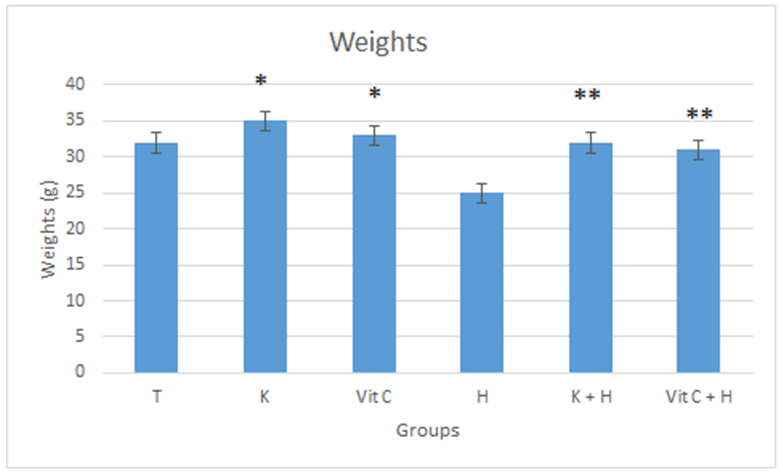
Figure 1: Weight gain in grams during 30 days of treatment.
T: Control; H: H2O2; K: Ketoprofen; K+H: Ketoprofen+H2O2; C:
Vitamin C; C+H: Vitamin C+H2O2. *Significantly different from
groups (T and H). **Significantly different from groups control
of stress; the number of mice used in each group was 6.
The results in Figures 2-6 showed that the activity of stress
markers (CAT, SOD, GPx, SDH and TBARS) increased
significantly in the treated group by hydrogen peroxide as
compared with those of the control group. Explains presence
of chronic oxidative tsress inl iver control stress group
deduced by the presence of Reactive Oxygen Species (ROS)
generate by oxidative power of the hydrogen peroxide.
Reactive Oxygen Species (ROS) produces oxidative stress
which has been characterized in liver and includes, among
several changes, an increase in the level of catalase,
superoxide dismutase, glutathione peroxidase, succinate
dehydrogenase and Thiobarbituric Acid Reactive Substances
(TBARS), indicative of lipid peroxidation. The level of these
enzyme activities in cells is crucial for determining the steady
state levels of superoxide radicals and hydrogen peroxide,
superoxide dismutase converts superoxide radicals to
hydrogen peroxide, which is then decomposed by catalase,
and succinate dehydrogenase catalyzes the oxidation of
succinate to fumarate with the reduction of ubiquinone to
ubiquinol. This occurs in the inner mitochondrial membrane
by coupling the two reactions together. By one electron
reductions of oxygen give rise to Reactive Oxygen Species
(ROS) which include free as superoxide or Hydroxyl
radical (OH) anion radicals. Other non-oxygen radical species
can be produced, such as Hydrogen Peroxide (H2O2) and
singlet oxygen the result of an imbalance between the balance
of pro oxidants and antioxidant defense systems. As shown
activity of stress markers (CAT, SOD, GPx, SDH and TBARS)
decreases significantly in the treated group by (K+H) and
(C+H) as compared to the group treated with hydrogen
peroxide. Explains the restoration of balance redox reactions
compared to antioxidant defense in the liver, by reducing
significantly the production of Reactive Oxygen Species
(ROS). also show significant protective effect against
Reactive Oxygen Species (ROS) and against their oxidative
effect on the molecular level, the significant decrease in
the activity of stress marker in treated groups by K and C
compared to the control groups showed a protective effect
against Reactive Oxygen Species (ROS) by restoring the
balance of redox reactions, this protection potential is
mainly attributed to the antioxidant capacity in ascorbic acid
to scavenge Reactive Oxygen Species (ROS), these results
also show that Ketoprofen also has scavenging activity
ROS, which explains the antioxidant effect of NSAID
ketoprofen hide behind the other to already known. However,
interpretation of these results becomes easy because
administration of only of NSAID namely, ketoprofen in the
absence of hydrogen peroxide decreases the amount of ROS
in liver compared values of those recorded with hydrogen
peroxide alone. The pro oxidant effects of hydrogen peroxide
and the observed protective effect of Ketoprofen were
explored by decreasing the activity of stress marker in treated
groups (K+H) and (C+H) relative to control stress and from K
and C compared to the control.
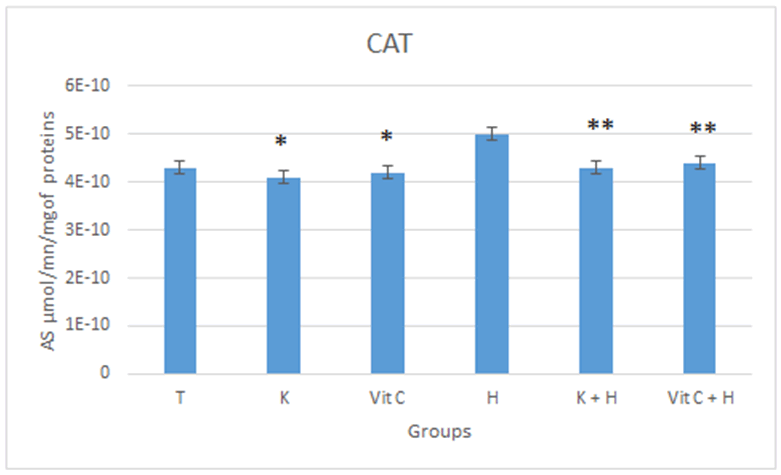
Figure 2: Evaluated antioxidant effect of NSAID ketoprofen by
CAT activity.
T: Control; H: H2O2; K: Ketoprofen; K+H: Ketoprofen+H2O2;
C: Vitamin C; C+H: Vitamin C+H2O2. *Signi icantly different
from groups (T and H). **Signi icantly different from groups
control of stress; the number of mice used in each group was
6.
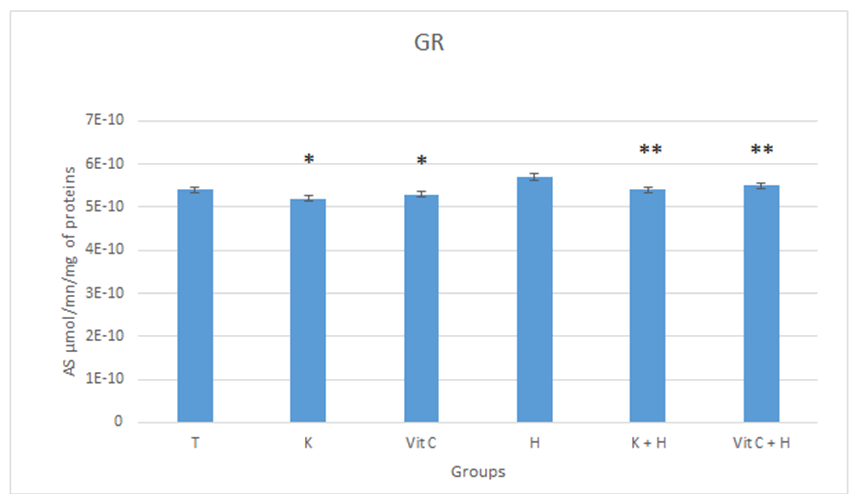
Figure 3: Evaluated antioxidant effect of nsaid ketoprofen
evaluated by GR activity.
T: Control, H: H2O2; K: Ketoprofen; K+H: Ketoprofen+H2O2; C:
Vitamin C; C+H: Vitamin C+H2O2. *Significantly different from
groups (T and H). **Significantly different from groups control
of stress; the number of mice used in each group was 6.
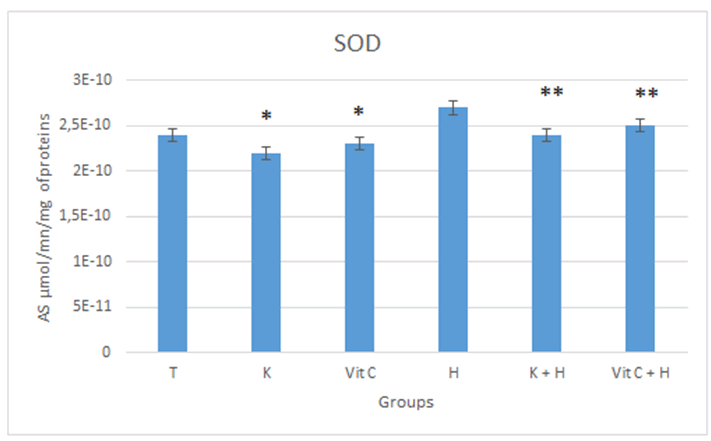
Figure 4: Evaluated antioxidant effect of NSAID ketoprofen
evaluated by SOD activity.
T: Control; H: H2O2; K: Ketoprofen; K+H: Ketoprofen+H2O2; C:
Vitamin C; C+H: Vitamin C+H2O2. *Significantly different from
groups (T and H). **Significantly different from groups control
of stress; the number of mice used in each group was 6.
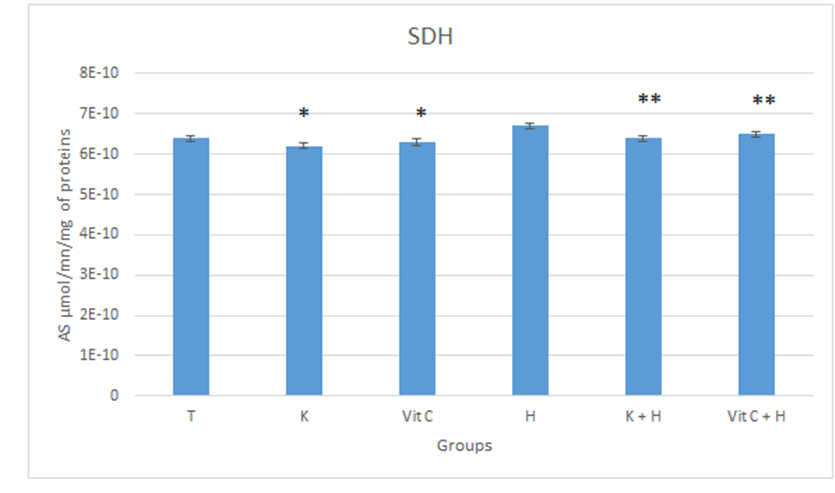
Figure 5: Evaluated antioxidant effect of Nsaid ketoprofen
evaluated by SDH activity.
T: Control; H: H2O2; K: Ketoprofen; K+H: Ketoprofen +H2O2; C:
Vitamin C; C+H: Vitamin C+H2O2. *Significantly different from
groups (T and H). **Significantly different from groups control
of stress; the number of mice used in each group was 6.
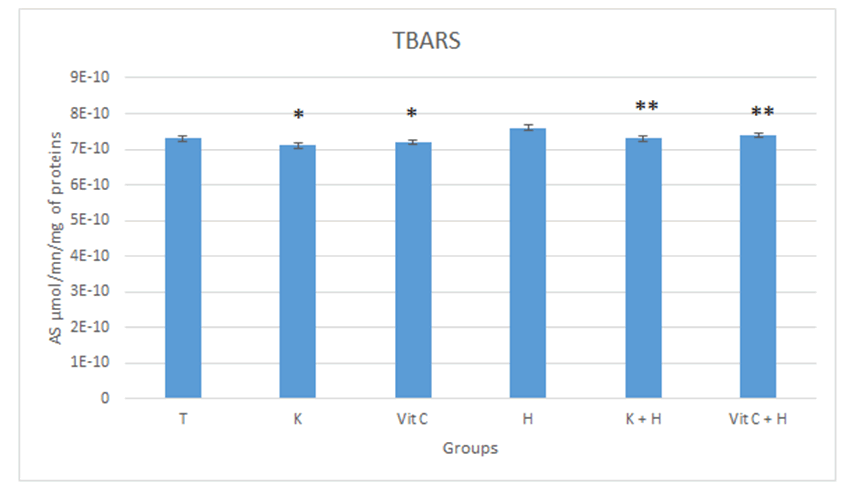
Figure 6: Evaluated antioxidant effect of nsaid ketoprofen
evaluated by tbars activity.
T: Control; H: H2O2; K: Ketoprofen; K+H: Ketoprofen+H2O2;
C: Vitamin C; C+H: Vitamin C+H2O2. *Significantly different
from groups (T and H). **Significantly different from groups
control of stress; the number of mice used in each group was
6.
Conclusion
This study has shown that Ketoprofen have antioxidant effect
according to the results obtained from the treatment of mice
with NSAID Ketoprofen by a dose (3 mg/kg) and treatment by
a dose (3 mg/kg) in compared with stress control group
treated by H2O2 by a dose (10 mg/kg) has demonstrated the
important protective antioxidant effect of NSAID Ketoprofen
against ROS compared to ascorbic acid effect. Have used
vitamin C also known as ascorbic acid name, is definitely the
star of vitamins to the general public. It lends many
properties, some of which are not necessarily proven. The
food industry also exploits the effects recognized antioxidants
ascorbic acid form of derivatives used as preservatives (E300,
E301 and E302). Vitamin C is involved in many body functions:
It has antioxidant properties that help to help the body fight
against the accumulation of heavy metals such as lead,
mercury and cadmium. Moreover, the antioxidant activity of
the ascorbic acid can neutralize free radicals, thereby
protecting the cells of the organism aging and for
strengthening the immune defenses. In addition, Ketoprofen
has been demonstrated to inhibit chemically induced
oxidative stress in animal. The protective effect of Ketoprofen
against ROS has been presumably attributed to its ability to
inhibit inflammation first and oxidation second. The antiinflammatory
and antioxidant action of Ketoprofen is believed
to result from its non-specific inhibition of cyclooxygenase-2.
Moreover, Ketoprofen has been reported to inhibit
prostaglandin biosynthesis by inhibiting Cyclooxygenases
(COXs) have two major subtypes COX-1 and COX-2, COX-2 is
inducible and mediates inflammation response. In the state of
inflammation there to increase the oxidation reaction in the body due to the activation of metabolism this explains the
presence ROS in the state of inflammation. In addition,
reactive oxygen species can also be produced by
inflammatory cells as well as many other cellular sources.
Metabolism of a variety of stressful chemical molecule also
leads to generation of ROS. The main mode of action is
irreversible inhibition of cyclooxygenase activity by acetylating
serine in the active site of the enzyme. This causes the
inhibition of prostaglandin and thromboxane synthesis. COX-2
is rapidly inducible by e.g. inflammatory stimuli and
contributes to inflammatory responses, which explains the
antioxidant effect of drug inhibition hide behind COX-2. We
demonstrated a dose of Ketoprofen that inhibited oxidative
power of hydrogen peroxide and production of reactive
oxygen species is a (3 mg/kg). In conclusion, the results show
clearly on the protective antioxidant effect of Ketoprofen
against the intoxicate H2O2 and ROS generation, in order to
strengthen the system of antioxidant defense and inhibited
the activation pathways of the molecules responsible for
causing oxidative stress.
Acknowledgment
This project was supported by the national center of scientific
research; the authors would thank them for their generous
funds.
References
- Kantor TG (1986) Ketoprofen: A review of its pharmacologic and clinical properties. Pharmacotherapy. 6(3):93–103.
[Crossref][Googlescholar][Indexed]
- Mazieres B, Rouanet S, Guillon Y, Scarsi C, Reiner V (2005) Topical ketoprofen patch in the treatment of tendinitis: A randomized, double blind, placebo controlled study. J Rheumatol. 32 (8):1563–1570.
[Googlescholar][Indexed]
- Mazieres B (2005) Topical Ketoprofen Patch. Drugs RD. 6(6):337–344.
[Crossref][Googlescholar][Indexed]
- Sekiya I, Morito T, Hara K, Yamazaki J, Ju YJ, et al. (2010) Ketoprofen Absorption by Muscle and Tendon after Topical or Oral Administration in Patients Undergoing Anterior Cruciate Ligament Reconstruction. AAPS Pharm SciTech. 11(1): 154–158.
[Crossref][Googlescholar][Indexed]
- Julou L, Guyonnet JC, Ducrot R, Fournel J, Pasquet J. Ketoprofen (1976) (2-(3-benzoylphenyl)-propionic acid). Main pharmacological properties-outline of toxicological and pharmacokinetic data. Scand J Rheumatol. 14:33-42.
[Googlescholar][Indexed]
- Guyonnet JC, Julou L, Helsinki (1975) Symposium on ketoprofen. Rheumatol Rehabil. 1976;15(1):1-14.
- Julou L, Guyonnet JC, Ducrot R, Pasquel J (1976) Some pharmacological and toxicological studies on ketoprofen. Eighth European rheumatology congress, Helsinki, 1975. Symposium on ketoprofen. Rheumatol Rehabil. 15(1):5-10.
[Crossref][Googlescholar][Indexed]
- Perrone MG, Scilimati A, Simone L, Vitale P (2010) Selective COX-1 Inhibition: A Therapeutic Target to be Reconsidered. Curr Med Chem. 17(32):3769-3805.
[Crossref][Googlescholar][Indexed]
- Finkel T, Holbrook NJ (2000) Oxidants, oxidative stress and the biology of ageing. Nature. 408(6809):239-247.
[Crossref][Googlescholar][Indexed]
- Takabe W, Niki E, Uchida K, Yamada S, Satoh K, et al. (2001) Anti-atherogenic Antioxidants Regulate the Expression and Function of Proteasome α-Type Subunits in Human Endothelial Cells. Carcinogenesis. 276(44):40497-40501.
[Crossref][Googlescholar][Indexed]
- Kawanishi S, Hiraku Y, Oikawa S (2001) Mechanism of guanine specific DNA damage by oxidative stress and its role in carcinogenesis and aging. Mutat Res, 488: 65-76.
[Crossref][Googlescholar][Indexed]
- Ischiropoulos H, Beckman JS (2003) Oxidative stress and nitration in neurodegeneration: Cause, effect, or association. J Clin Invest. 111(2):163-169.
[Crossref][Googlescholar][Indexed]
- Steinberg D (2002) Atherogenesis in perspective: Hypercholesterolemia and inflammation as partners in crime. Nat Med. 8(11):1211-1217.
[Crossref][Googlescholar][Indexed]
- Tian WN, Braunstein LD, Apse K, Pang J, Rose M, et al. (1999) Importance of glucose-6-phosphate dehydrogenase activity in cell death. Am J Physiol. 276:C1121-C1131.
[Crossref][Googlescholar][Indexed]
- Mora A, Paya M, Rios JL, Alcaraz MJ (1990) Structure activity relationships of polymethoxyflavones and other flavonoids as inhibitors of non-enzymic lipid peroxidation. Biochem Pharmacol. 40:793-797.
[Crossref][Googlescholar][Indexed]
- Takabe W, Niki E, Uchida K, Yamada S, Satoh K, et al. (2001) Acrolein oxidative stress promotes the development of transformation: involvement of a potent mutagenic lipid peroxidation product, acrolein. Carcinogenesis. 22(6):935-941.
[Crossref][Googlescholar][Indexed]
- Kondo K, Hirano R, Matsumoto A, Igarashi O, Itakura H (1996) Inhibition of LDL oxidation by cocoa. Lancet. 348:1514-1518.
[Crossref][Googlescholar][Indexed]
- Kirkman HN, Gaetani GF (1984) Catalase: a tetrameric enzyme with four tightly bound molecules of NADPH. Proc Natl Acad Sci USA. 1984, 81: 4343-4347.
[Crossref][Googlescholar][Indexed]
- Gaetani GF, Galiano S, Canepa L, Ferraris AM, Kirkman HN (1989) Catalase and glutathione peroxidase are equally active in detoxification of hydrogen peroxide in human erythrocytes. Blood. 73: 334-339.
[Crossref][Googlescholar][Indexed]
Citation: Zoubair B, Mohammed L, Brahim B, kabine M, Noureddine B (2022) Evaluation of Ketoprofen Effect on Oxidative
Stressed Mice. Biochem Mol Biol J. 8:110.
Copyright: © 2022 Zoubair B, et al. This is an open-access article distributed under the terms of the Creative Commons
Attribution License, which permits unrestricted use, distribution, and reproduction in any medium, provided the original author
and source are credited.







